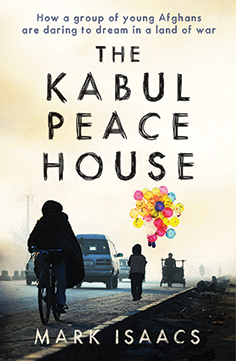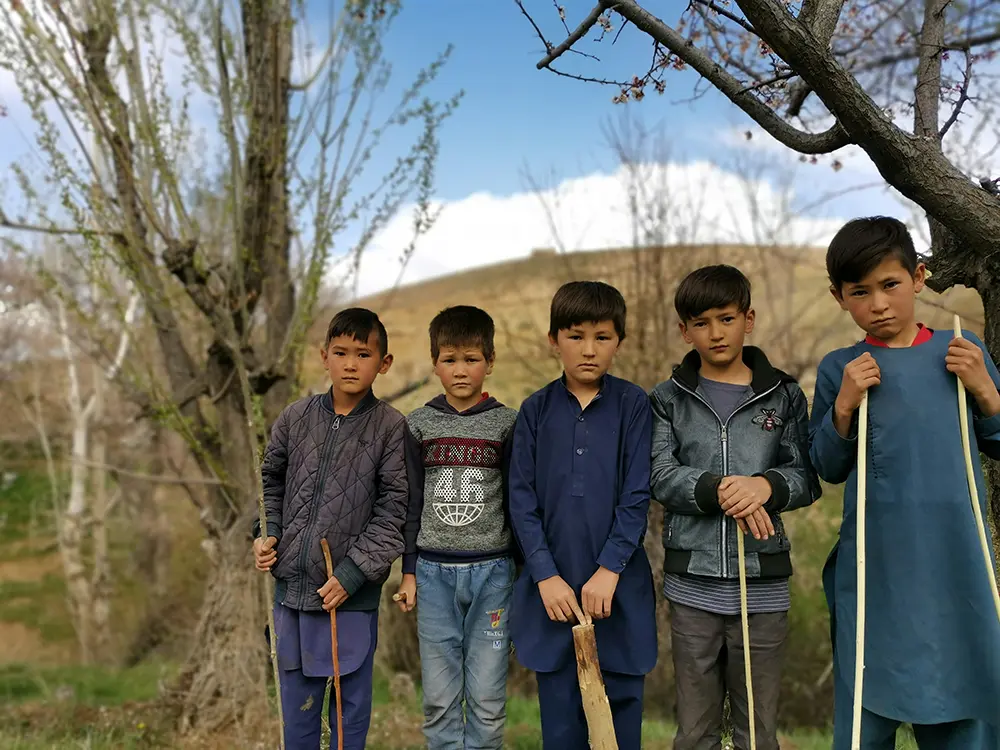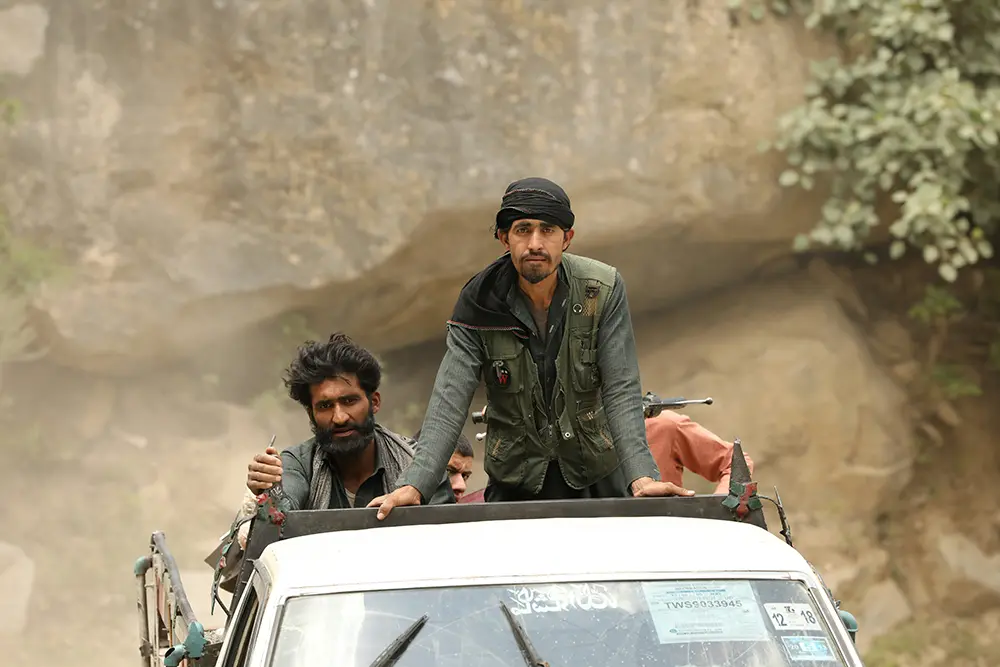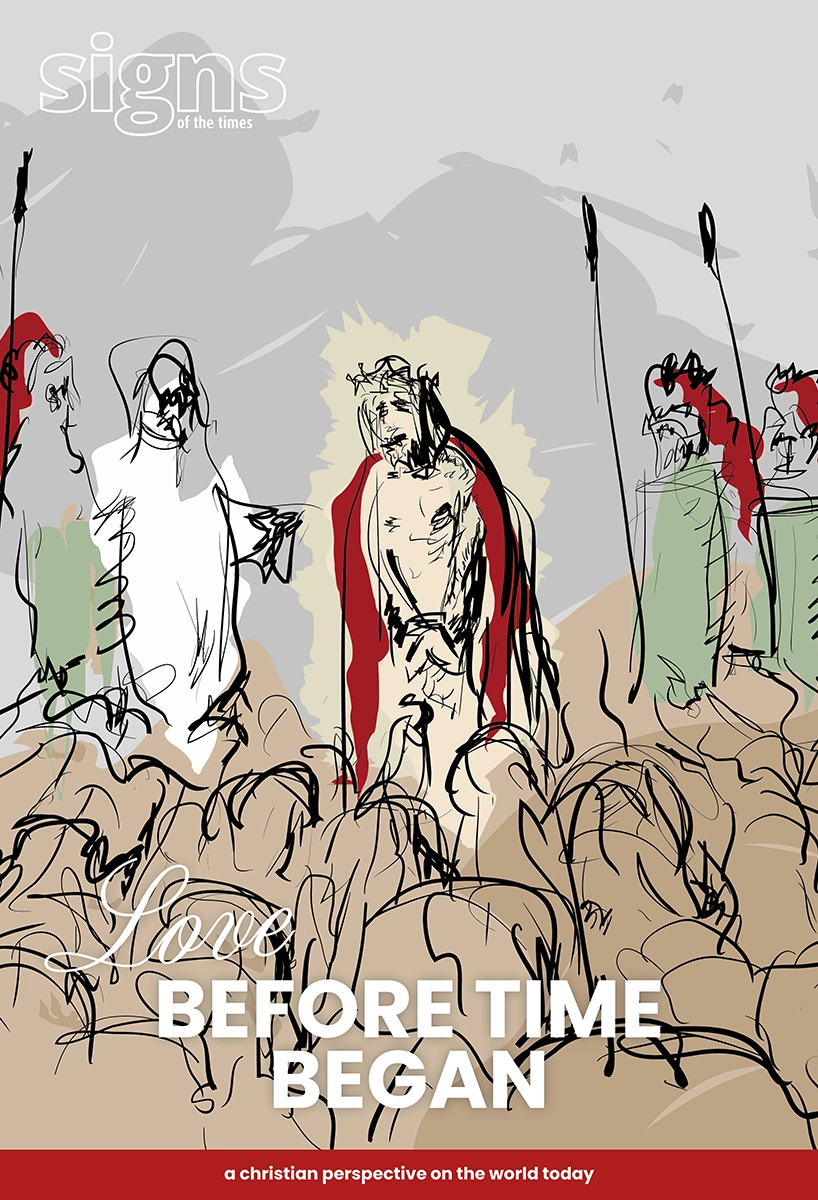Nonviolence Works
April 1, 2020

Australian refugee advocate Mark Isaacs travelled to Afghanistan in 2016 to research the fate of asylum seekers rejected and returned by the Australian government. While there, he met a small group of Afghani young people living in a multi-ethnic share house as part of their work to bring change through nonviolence. Fascinated, Isaacs returned the following year to conduct in-depth interviews that became The Kabul Peace House, a compelling glimpse of how one of the world’s most troubled nations could be different.
Afghanistan is usually in the headlines for all the wrong reasons
Afghanistan is usually in the headlines for all the wrong reasons—excepting, perhaps, its cricketing exploits. We know little about its people, its cultures, its history. In Australia, Afghanistan came to prominence with the infamy of the Taliban and Al Qaeda after the terrorist attacks of September 11, 2001, followed by the deployment of coalition troops as part of the “War on Terror” and the stories of abuse and brutality that emerged from that deployment. And Afghanistan was brought to public notice again with the increasing political attention given to asylum seekers arriving by boat between 2001 and 2013.

Most of Isaacs’ interviewees are from rural Afghanistan and—like the group itself—these establishing stories, replete with foreign names, rival ethnic groups and unknown geography, take time to coalesce into a working familiarity. As young as they are, most in their 20s when Isaacs spent time with them, they each have their own scars from war and violence in their families and communities, experiences of poverty, discrimination on the basis of ethnicity and gender, and living amid the ongoing threats of violence, unsustainability and political failure.
As they tell their stories and explain their work, the young people recognise that their experiences are often driven by much larger forces than themselves: entrenched ethnic divisions that date back to imperial colonialism, the Soviet invasion during the Cold War, the Taliban, the American military presence, and the minor role their nation plays on the fringes of the world economy. One response would be to resign themselves to the seeming inevitability of their circumstances, then to seek to protect and benefit themselves as much as possible or perhaps to seek to escape, as millions of Afghani refugees already have.
a better way
But the reason The Kabul Peace House is a story worth telling is that these young people have chosen another response. While their attempts at living and acting differently might seem idealistic or naive, their response to their tragic circumstances is to try something different, however small, tentative and even illogical such attempts might seem.
The largely self-taught leaders of the group, particularly Insaan (a pseudonym), built their understanding of peace on well-established faith traditions, as well as the writings of more contemporary nonviolent activists including Mohandas Gandhi and Martin Luther King Jr. Isaacs describes how “almost by accident, Insaan had stumbled upon the core philosophies of nonviolence, teachings that originated thousands of years ago and had spread all over the world. This was not a passive movement; it was a movement of positive action, the true expression of which was compassion.”

Insaan came to understand—and to teach and to practise—the effectiveness of nonviolence: “It was a truly revolutionary idea, even if it was as ancient as the first religions,” comments Isaacs, hinting at the non-violent life of Jesus Christ, who warned that “all who draw the sword will die by the sword” (Matthew 26:52). Fired by this radical tradition, Insaan and his group began to imagine an alternative to the perpetuation of violence, poverty and social failure. They focused on three core values: equality, including between ethnic groups and genders; environmental sustainability and restoration; and peacemaking and nonviolence.
nonviolence works
Academics, as well as activists, have noted the remarkable effectiveness of nonviolence. Ron Sider, for example—a professor of theology, holistic ministry and public policy—reviewed a number of twentieth century social movements and revolutions in his 2015 book. Nonviolent Action surveys Gandhi’s Indian independence campaign, the fall of Communism in East Germany, the women’s democracy movement in Liberia and other peaceful revolutions. Sider concludes that such movements are consistently more effective—twice as likely to succeed, in one study—in bringing about political change, come with less human and economic costs, and lay a better foundation for flourishing societies.
“It was a truly revolutionary idea, even if it was as ancient as the first religions,” comments Isaacs, hinting at the non-violent life of Jesus Christ, who warned that “all who draw the sword will die by the sword”
But, Sider points out, such movements are the exception to the norm of war in human history and imagination. Rarely have human societies invested in nonviolence or peacemaking at anything like the scale we invest in war, violence, and their macabre industries and technologies. And, soberly, he calls for personal and social investment in nonviolence with the “moral equivalence of war”—borrowing the phrase from philosopher William James—meaning that those who seek peace, justice and freedom through nonviolence must be equally prepared to live, invest, train and die for the cause as their militaristic counterparts.
fragile success
The Kabul Peace House recounts a number of initiatives that this group of young people have undertaken over a period of about 10 years—even if the governments of the world would not invest in peace, they gave their time and resources, and risked their honour and reputation. Some of their efforts seem modest—planting trees, establishing “peace parks” and cleaning up rubbish. Other initiatives brought warring parties together and challenged members of the group to find ways to show love even to Taliban fighters: “Gandhi said, ‘It is not nonviolence if we love merely those that love us. It is nonviolence only when we love those that hate us.’ Or in this case, those we hate. In place of war and revenge, we should perform acts of kindness,” comments Insaan, not realising, perhaps, how closely Gandhi was echoing Christ.

Even the group’s successes seem fragile in comparison with the forces perpetuating war, violence and exploitation. But these young Afghani activists would agree with Sider: “If humanity could devote as much time and effort to understanding their emotions and developing methods of nonviolence as they did in developing deadly weapons, the world would be a much safer place.”
“We will not achieve peace during our generation,” says Hojar, one of the female members of the group, early in Isaacs’ book. “We are simply laying the foundations for a better future.” For them, this is a generational project—which is why it is worth investing so much in today.
If humanity could devote as much time and effort to understanding their emotions and developing methods of nonviolence as they did in developing deadly weapons, the world would be a much safer place.
That a group of young people continue to risk creative acts of defiant love and compassion is inspiring—and this is the value of The Kabul Peace House as a book. That they have some stories of success amid the tragic brokenness of contemporary Afghanistan should give us hope. That there is still so much more to do should call us to invest more in nonviolent activism in our own lives and to learning more from the good stories of others, particularly from those whose lives are so different from our own and whose humanity is so much the same.
The Kabul Peace House (2019) is published by Hardie Grant Books.













